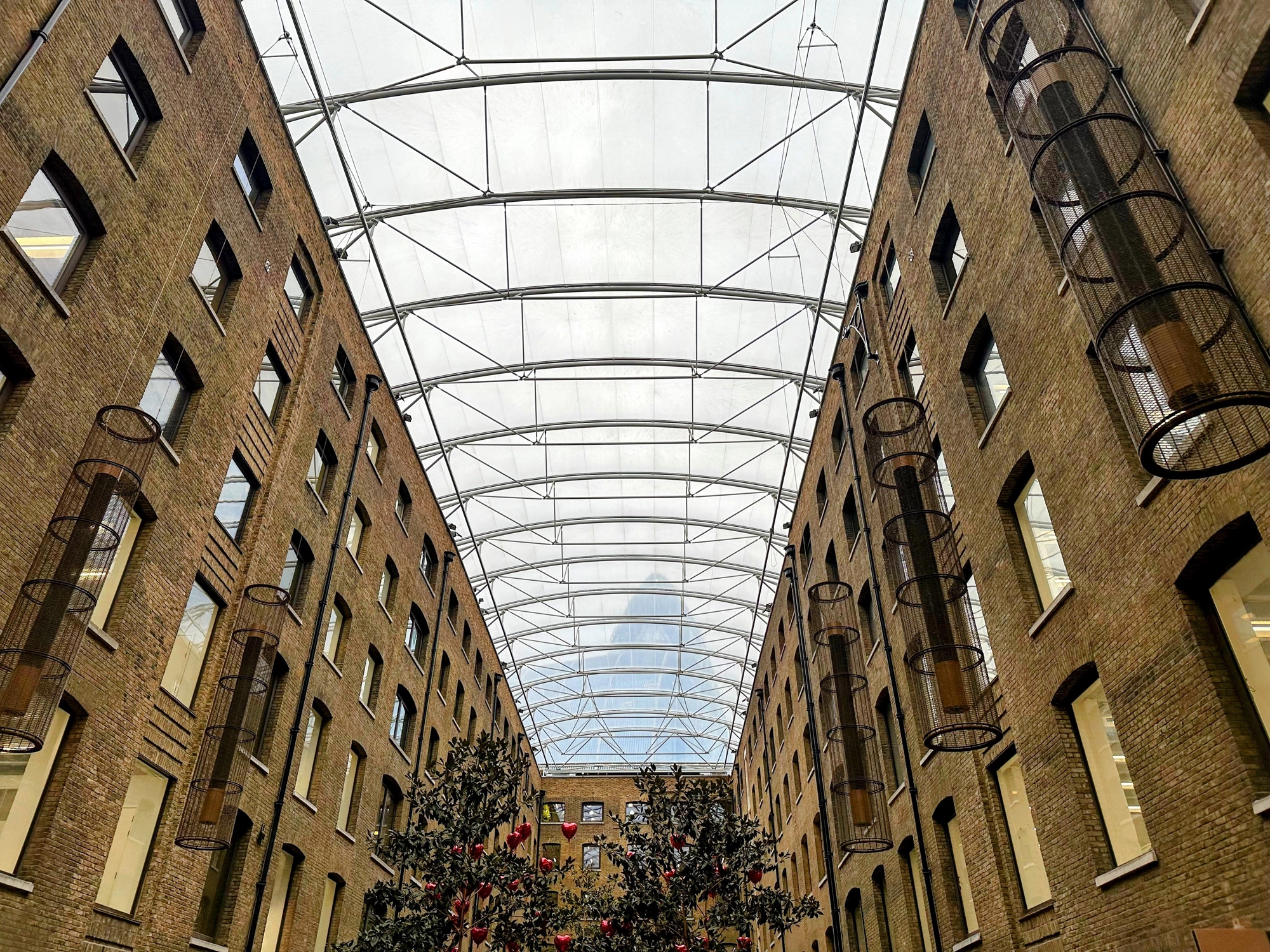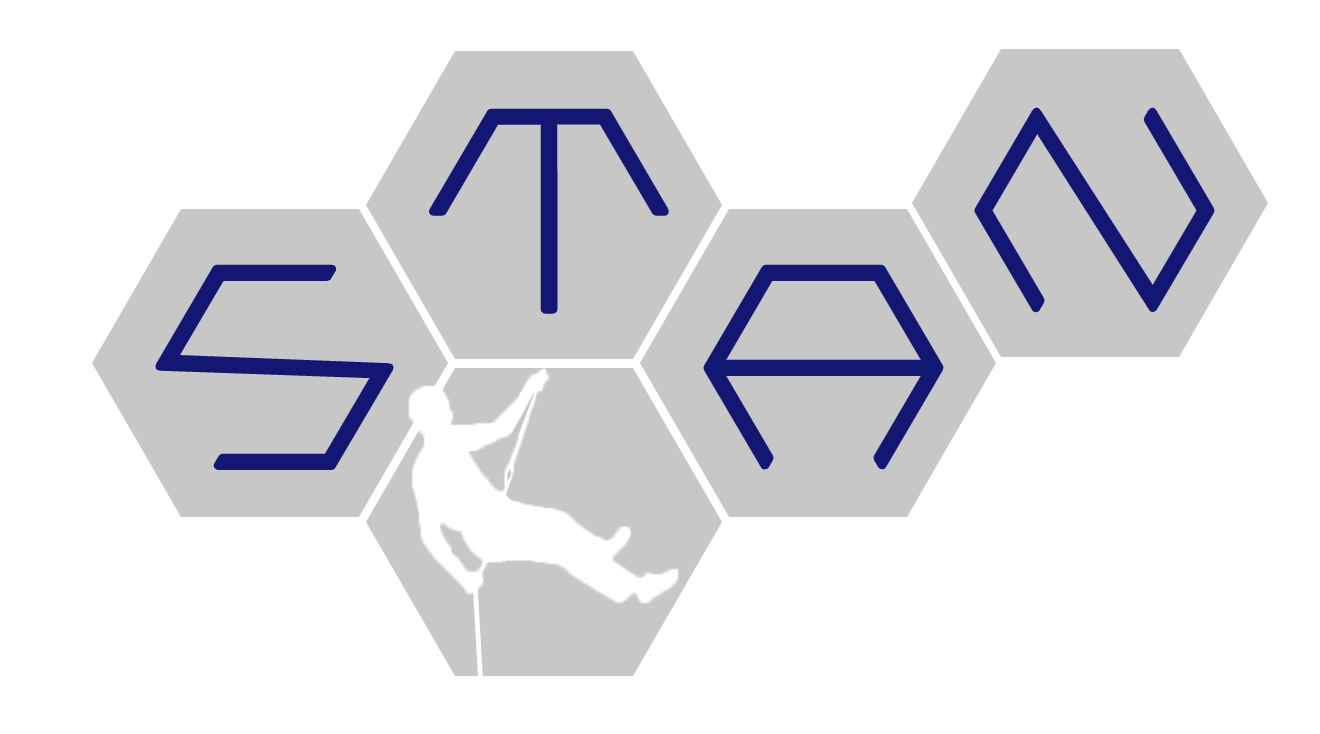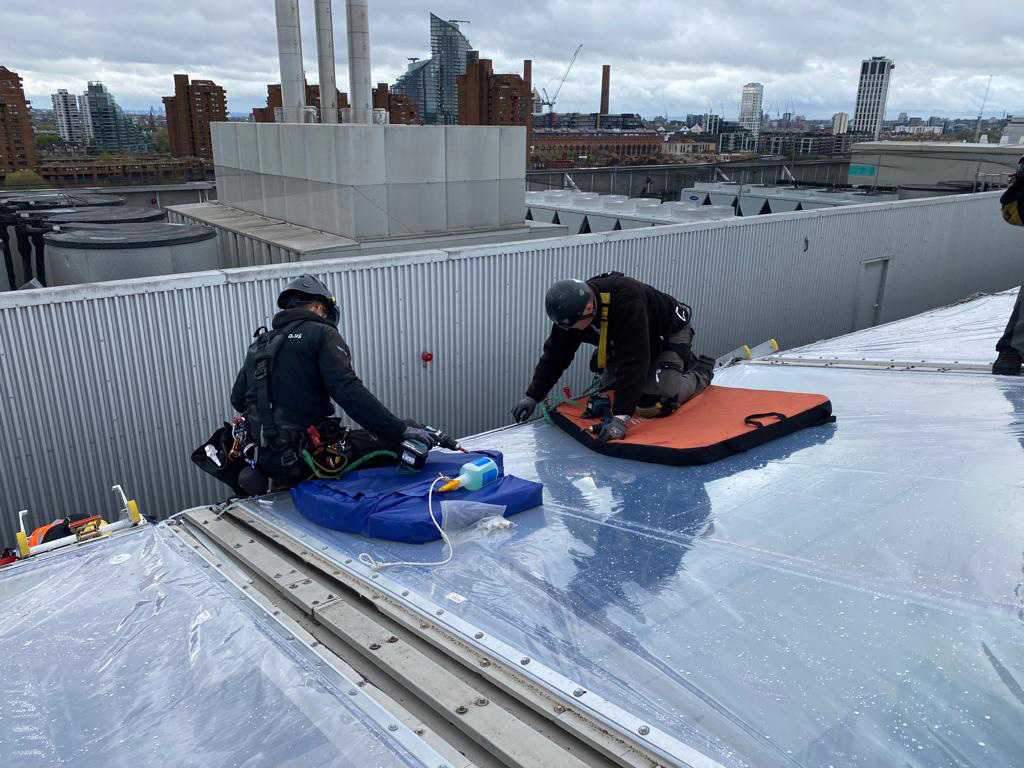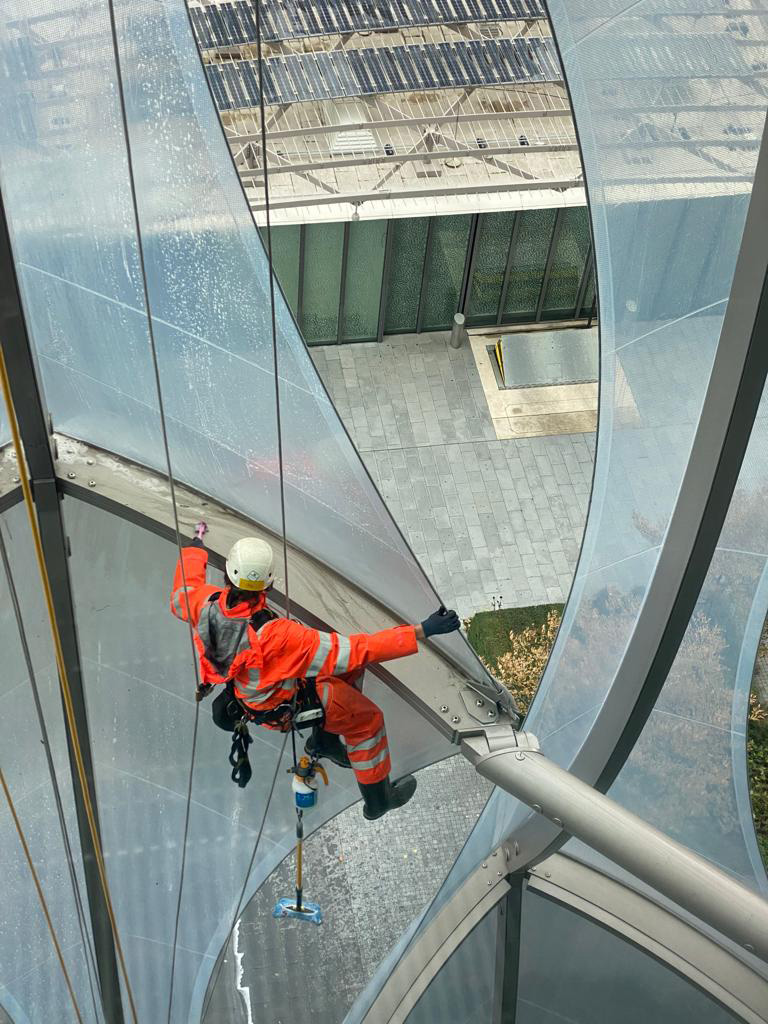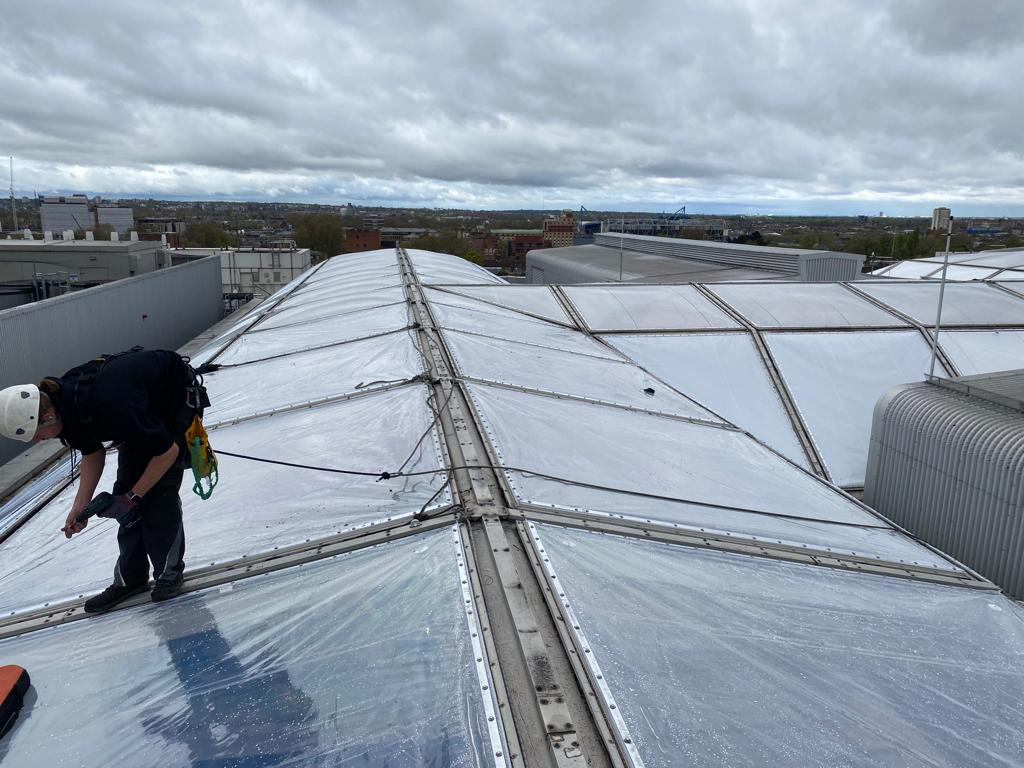Why Use ETFE?
ETFE, short for ethylene tetrafluoroethylene, is a highly advanced and innovative polymer material used in the building industry, particularly for state-of-the-art architectural designs. It is a fluorine-based plastic that possesses remarkable properties, making it an ideal choice for creating lightweight, durable, and visually stunning structures. ETFE is known for its exceptional transparency, allowing it to transmit up to 95% of natural light, while also offering excellent UV resistance and fire-retardant properties. Due to its lightweight nature, ETFE significantly reduces the overall weight of the building, enabling architects to design large and complex structures without overburdening the foundation. Additionally, ETFE’s flexibility allows for creative and eye-catching shapes, making it a preferred material for iconic facades, atriums, and roof structures in modern architectural masterpieces. This remarkable material has revolutionized the building industry, enabling architects to create sustainable and energy-efficient structures that blend harmoniously with their surroundings while providing an engaging and enjoyable experience for the occupants.
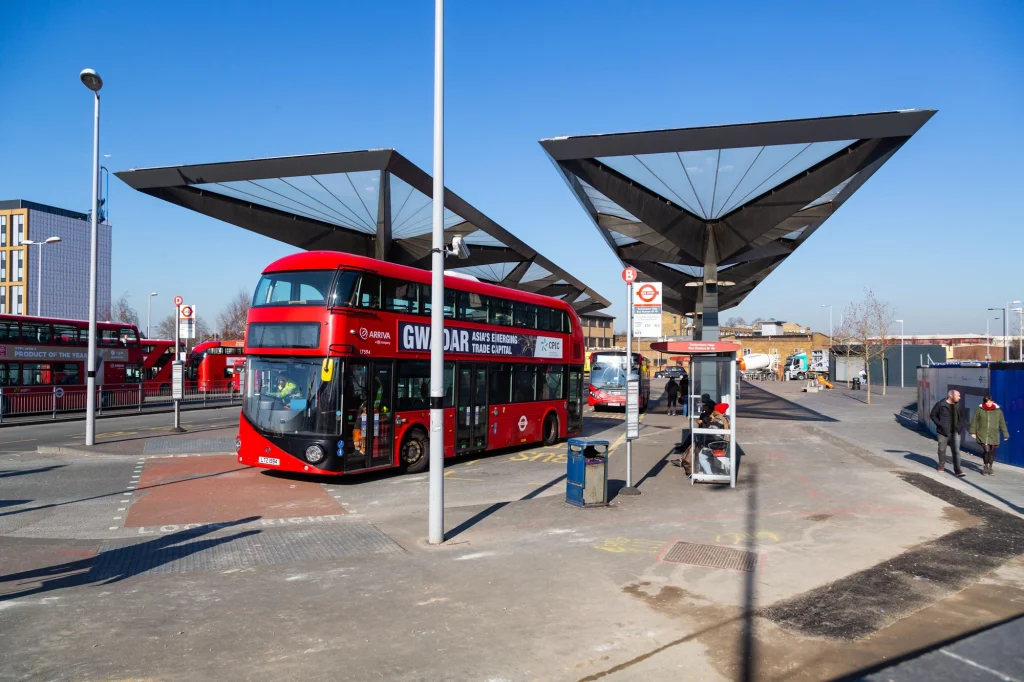
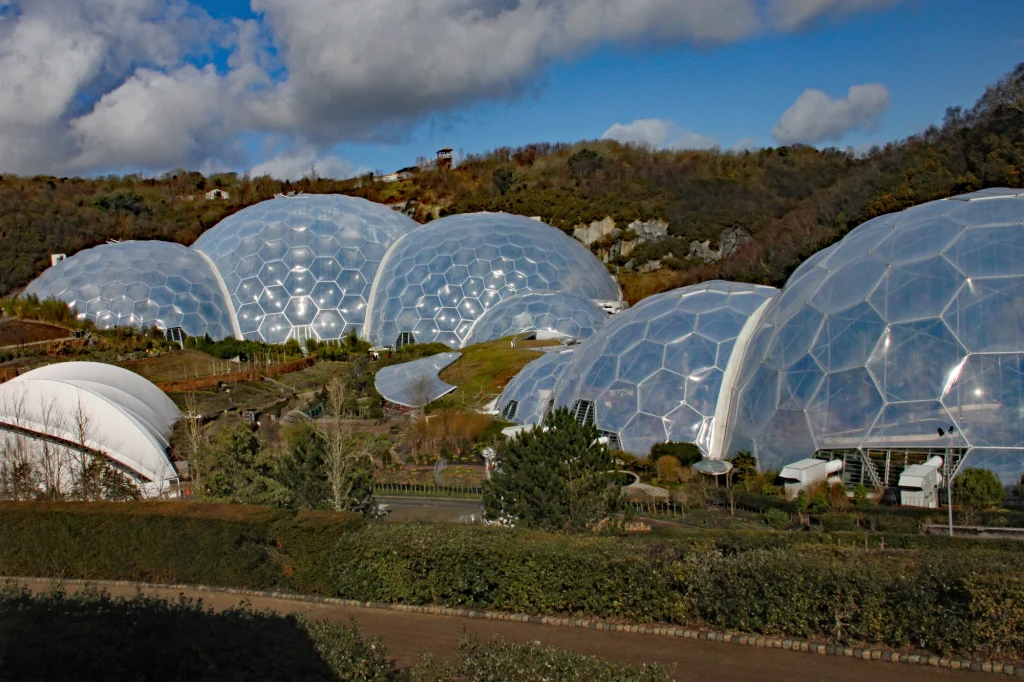
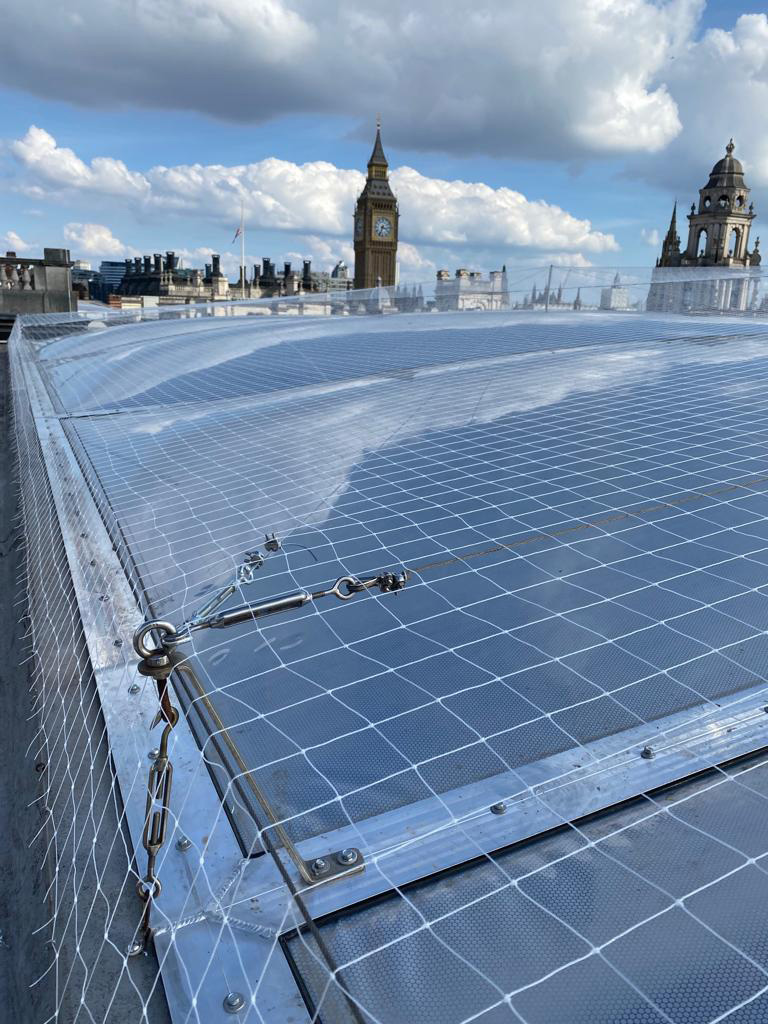
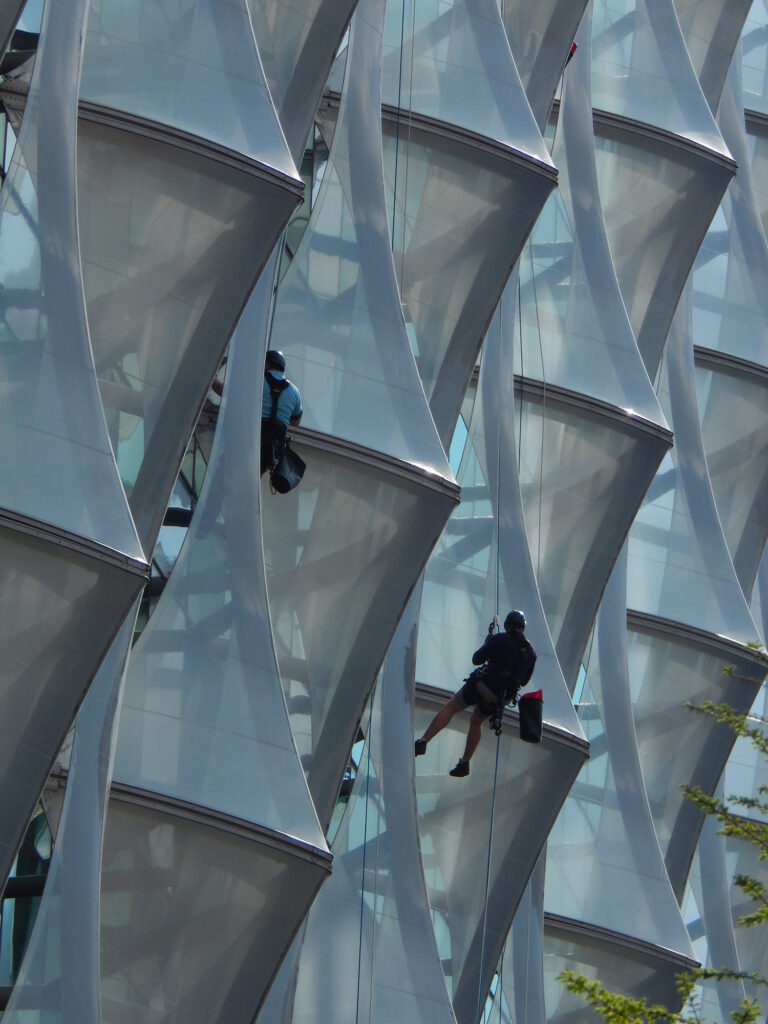
Why the need for knowledge & experience?
When installing ETFE (Ethylene Tetrafluoroethylene) materials, it is crucial to have highly skilled and trained operatives due to the unique challenges and complexities associated with this type of installation. Stan Access have been involved in some of the most iconic ETFE structures in the Uk alongside working with Fabric design & manufacturing companies such as VECTOR FOILTEC with a team of highly skilled ETFE installation & Maintenance crew we lead the way in safely delivering the projects to the highest quality standard & on time.
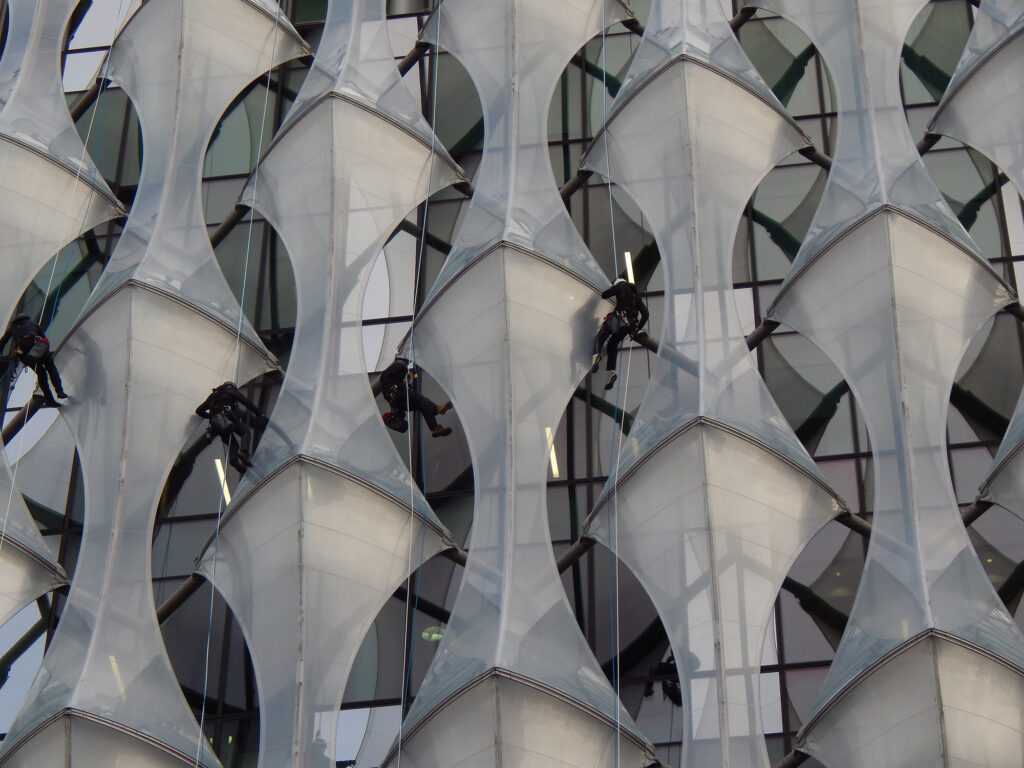
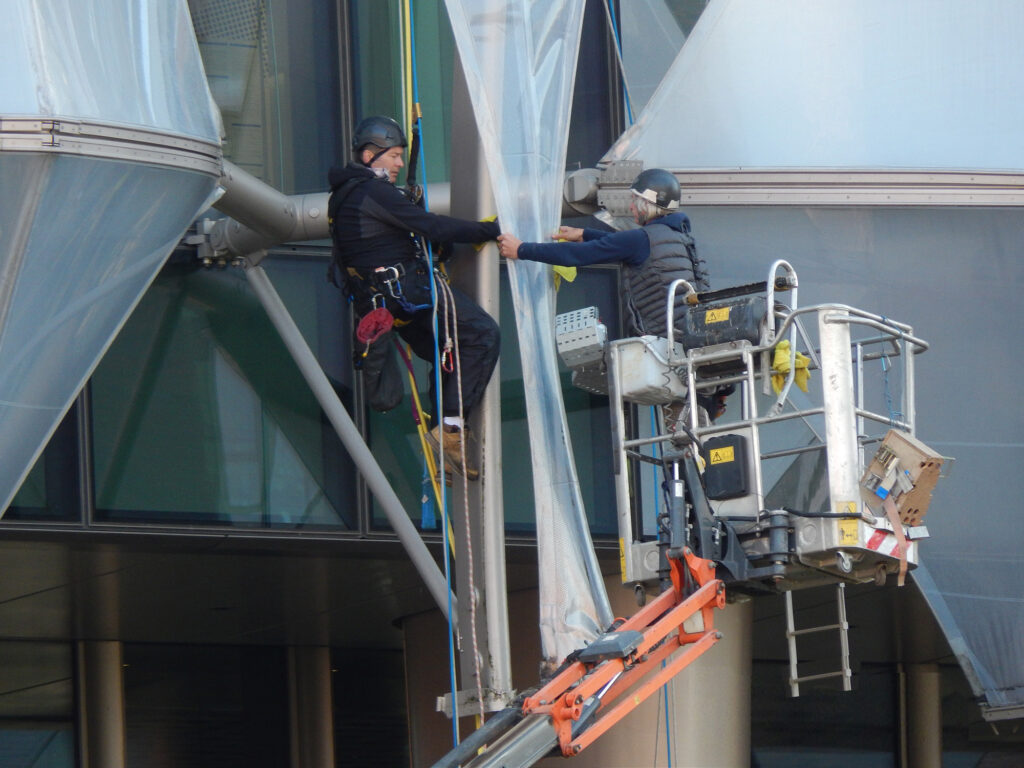
Why maintain your ETFE Structure?
Regularly checking and maintaining your ETFE (Ethylene Tetrafluoroethylene) structure is of utmost importance to ensure its longevity, structural integrity, and optimal performance. ETFE structures are renowned for their durability and resistance to environmental factors, but even the most robust materials can experience wear and tear over time. By conducting routine inspections and maintenance, potential issues such as small tears, dirt build up, or damage from weather elements can be identified and addressed promptly. Neglecting to do so may lead to more significant problems down the line, compromising the functionality and aesthetics of the structure. Timely maintenance not only extends the lifespan of the ETFE structure but also enhances safety and preserves its original architectural beauty, providing continued enjoyment and value for years to come.
Ensure you use experienced ETFE installers
Precision and Quality: Installing ETFE requires precise measurements, cutting, and sealing to ensure the material fits perfectly into the designated areas. Highly skilled operatives are well-versed in handling such precision tasks, which are critical to maintaining the structural integrity and aesthetic appeal of the installation.
Safety: ETFE installations often involve working at heights, sometimes in challenging or inaccessible areas. Trained operatives possess the necessary safety protocols, equipment, and expertise to work safely at elevated positions, reducing the risk of accidents and injuries.
Complex Geometry: Many architectural designs featuring ETFE involve intricate and complex geometries. Skilled operatives can adapt to these unique designs and effectively install ETFE panels, ensuring the final installation meets the intended design vision.
Efficient Execution: Trained operatives are proficient in using specialized tools and Wielding onsite techniques, which allow them to work efficiently and complete installations within stipulated timeframes, minimizing disruptions to ongoing construction projects.
How to Plan a PPM Program with Stan Access
Planning a PPM (Planned Preventative Maintenance) program for ETFE fabric structures involves systematically scheduling maintenance tasks to ensure the longevity, safety, and performance of the structures.. Here’s a Typical step-by-step Stan Access guide to planning a PPM program for ETFE fabric structures for clients, along with the benefits and servicing pumps:
Understanding the ETFE Fabric Structure:
Familiarize yourself with the specific ETFE fabric structure, its design, materials, and components. Understanding the unique characteristics and properties of ETFE will help in planning effective maintenance.
Identify Critical Components:
Identify critical components and areas that require regular maintenance. These may include the ETFE panels, supporting structure, inflation system (if applicable), drainage systems, and any other mechanical or electrical components.
Conduct Regular Inspections:
Schedule regular inspections to assess the condition of the ETFE fabric structure. Inspections should be carried out by trained personnel who can identify potential issues such as tears, wear and tear, UV damage, or dirt accumulation.
Develop a Maintenance Schedule:
Create a comprehensive maintenance schedule that includes routine cleaning, inspection, and necessary repairs. The frequency of maintenance tasks will depend on the environmental conditions and usage of the structure.
Cleaning ETFE Panels:
Regular cleaning is essential to maintain the transparency and appearance of ETFE panels. Clean the surface with a mild detergent and soft cloth or sponge. Avoid using harsh chemicals or abrasive materials that could damage the ETFE film.
Addressing Tears and Damage:
Promptly repair any tears or damages to the ETFE panels or fabric. Small tears can be patched with adhesive ETFE film patches, while significant damages may require professional repair.
Inflation System Maintenance:
If the ETFE structure is pneumatic (inflatable), regularly inspect and maintain the inflation system. Check for air leaks, monitor pressure levels, and service blowers or compressors as needed.
Drainage Maintenance:
Ensure that drainage systems, such as gutters and downspouts, are clear of debris and functioning correctly to prevent water accumulation and potential damage.


Benefits of PPM for ETFE Fabric Structures
Extended Lifespan: Regular maintenance can prolong the lifespan of ETFE fabric structures, reducing the need for costly replacements.
Enhanced Safety: Systematic inspections and repairs help identify potential safety hazards and prevent accidents.
Improved Aesthetics: Regular cleaning and maintenance maintain the transparency and appearance of the ETFE panels.
Cost Savings: Proactive maintenance can prevent major issues, saving on expensive repairs or replacements.
The Benefits of using Rope Access on ETFE Structures
Access to Difficult Areas: Rope access techniques allow operatives to reach difficult-to-access areas with ease. This is particularly advantageous for ETFE installations in tall or structurally complex buildings, where traditional access methods like scaffolding may not be feasible or efficient.
Versatility: Rope access techniques provide a flexible and versatile approach to installation, enabling operatives to move freely along the façade or roof, adapting to various angles and positions required for ETFE installation.
Reduced Impact on Surroundings: Rope access methods typically require fewer materials and set-up time compared to traditional access systems. This results in a reduced impact on the surrounding environment during the installation process.
Cost-Effectiveness: Utilizing rope access trained operatives can lead to cost savings, as it eliminates the need for costly scaffolding or heavy machinery. Additionally, the efficient execution reduces labor hours, contributing to overall project cost reduction.
